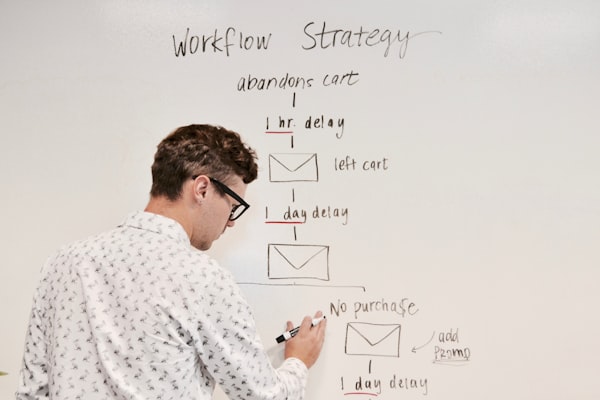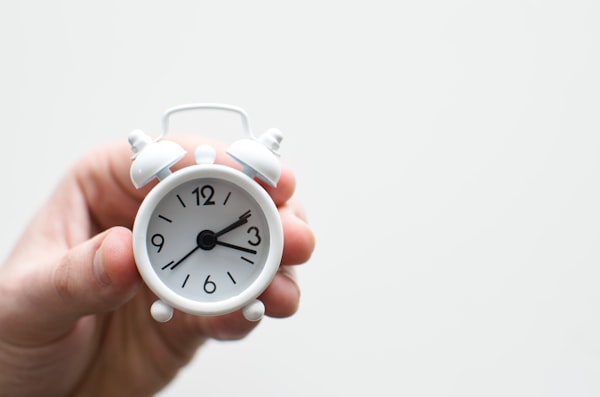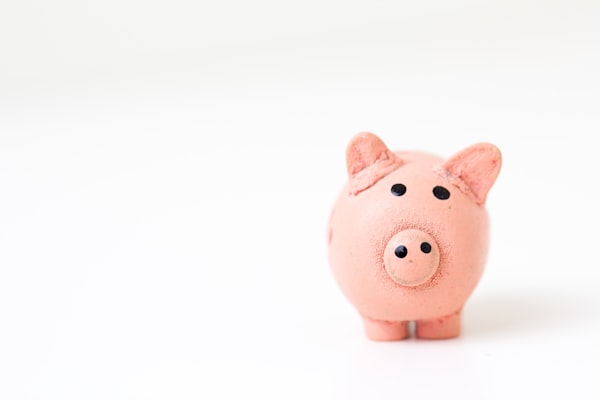Why Failing (The Right Way) Accelerates Your Success

The smarter you get, the more you realize what you don’t know.
There’s something so beautiful about that realization. It should fuel you to push forward, busting through your current skill-sets and knowledge, eager to discover new and better ways of achieving results.
But too often, the intimidating shadow of “perfection” paralyzes us into inaction.
We want to see our entrepreneurial endeavors prosper, and we’re compelled to pore over every detail to ensure its success. We pack in as much information as we can, hoping that if we work to get everything just right, our efforts will be rewarded.
Indefatigable work ethic is admirable, of course. We all want to pour ourselves into our ventures and watch as they flourish.
But there comes a point where the pursuit of perfection strays into potentially-crippling territory. Ernest Hemingway famously referred to this as encountering “the resistance.” This malicious force will lead you to believe that everything has to be perfect.
But with so many external and internal factors beating down on your content and marketing, you can safely assume that everything you work on will be far from perfect.
And that’s ok.
Hear me out.
Rather than be overcome by fear or pushed to a breaking point of exhaustion, you can – instead – use these perceived imperfections to your advantage. These small defeats will never define your product or service.
By embracing (strategically) mistakes and setbacks, as we’ll discuss in this article, you’ll be able to turn your entrepreneurial journey into a far more exciting and rewarding experience.
Failure is a feedback, not the finish line
One of the biggest misconceptions about failure is that it's the end of the road.
You've stopped earlier in life to look at someone who's hit a setback and thought, "Well, that's it. He's a failure."
It seems reasonable enough, right? They tried something. It didn't stick. Now they're back at square one…forever.
Nope. Not even close.
In real life, no one faces just one setback. It always comes back, over and over again. There is no one defining failure, but a series of them. This is what makes it hard to keep trying _—_discouragement piles up over time, making success seem farther and farther away, and the next set of bad outcomes seem inevitable.
This is the moment when people typically pause and rethink their plan, maybe go back to the drawing board, or maybe even give up. And that's okay. But that’s the wrong way to go about it.
When you fail, you don't have to go back to square one, but that's just one of the myths about failure. Let’s explore a few more.
The idea of "failure" is subjective.
Watch any TED talk on failure, and one word will get used over and over: risk.
That's not a coincidence. Failure and risk are related, but they are very different. Risk is about being effective and efficient, maximizing gains while minimizing losses. Failure is about making mistakes, not about striving to do more, but making the most possible mistakes.
What constitutes failure will look radically differently from person to person because everyone is taking on different types and amounts of risk. A lackadaisical approach to life can lead to success —but aggressive pursuit of success could also lead to success (in that way).
The more aggressive you are with your approach, the more failures you're likely to encounter.
Let's say you're learning to cook. One night, you decide to make baked chicken. You follow a recipe, set a timer… and forget all about it. The meal ends with the smoke alarm going off and chicken that sticks to the plate.
Was that a failure? Sure, it fits our definition, because you probably did something wrong (like, you know, forgetting your chicken).
But now let's imagine a different scenario. Even if it feels like "failing" to you, this path could have a lot more to teach you about your future relationship with food.
It might be something which gives you joy. It might be your stress buster that helps you relieve your day-to-day stress and this is the time when you move away from all your worries and be there. You might even realize you love the act of cooking and want to get a job at a restaurant.
This chance for adaptation, change, and growth is why failure is so powerful. It upends your approach and forces you to see what's around you. You always have the opportunity to improve your standing and move towards success.
Failure has gotten a bad rap.
You're probably wondering how I could say something like that and mean it. The idea of failure is so ingrained in us that we have forgotten to whisper sweet nothings in its ears.
Because, well …success can’t happen without failure.
Let’s look at an example. The first day you set up a Twitter account for business is a failure (because your profile probably isn’t great). The first day you set up a Twitter account for business is also the first step you take in the right direction.
On that day, you get in the habit of publishing, networking, and becoming a marketer on social media. That first faulty day was the failure that made your success happen.
This is one of the first steps in changing our mentality around the phenomenon of failure. We think it’s terrible when a twist of fate or bad luck throws us off track and permanently ruins our goals. This other way of thinking (the right way, in my opinion) remembers that every win is just the final stage of a complex microsystem that predates our successes.
You simply can’t have a great win without at least one failure leading the way.
When most successful rock bands were starting out and practicing in garages, there was no guarantee those kids were going to amount to much. They were probably just banging around on drums and sending their neighbours into a fit of rage.
But they donned their ear plugs and attended practice day after day. Sometimes, things didn’t work. Other times, they made a riff that made the hair on the back of your neck stand up. They heard from people who would become break their future to give them shows, then corporate sponsorships, and magazine covers.
Always, the success story started with a disaster or two.
This dedication to forging your own way is a recipe for success. Two million people write and publish their own books every year in America, which means that, that couple in your book club have more in common with— and, in fact, are better—than 10,000, someone who yearns to be more like JK Rolling, Jeff Sitlozen, or a 10000 other writers!
The answer is persistence. When you stick with it, you start experimenting, and it won’t all be champagne wishes and rose lunches from here on: you will make more mistakes, encounter more mishaps, and struggle longer.
This is the kind of tenacity that will push you through the downs of your program and get you to find your way to the up side.
Failure is about staying in the game just a little longer.
We grow up stems of folks like Thomas Edison, Alexander Brass, and Mark Cuban: inventors and business geniuses leveraged them of million dollars while still getting failed from time to time, who put together the kind of success that catapulted them into the record books.
What we don’t talk about are the people who were in the exact same positions as Edison, Bell, and Zuckerberg who didn’t?
Why don’t we hear about those people? They couldn't turn their dreams into reality and get drowned out of their stories of the guys who could, AKA the success.
Sheer number of success isn’t the real story. The real story is that every single person stumbling on the way to the top.
Take the story of Colonel Sanders. You know their pasta company, and you know their chicken of the three talked about in the advertisements. They didn’t spring from the skull of the KFC founder fully form from the nectar of gods: they fought and worked and failed (a lot) to become the biggest fast-food chain in the world.
They officially didn’t even get started until they were 65.
When they did, the first franchise to open was located in Salt Lake City, in a gas station. It closed down quickly after. The Colonel didn’t give a choice but to stop down at the Red X Food Mart and gas up their car—they had been out of gas for 10 miles before they found themselves on a bench, staring.
These setbacks continued: the Colonel hit the road and put dozens of franchises up in stores and restaurants across the country.
Finally, three years later, they had 165 franchises in operations across the country, entered the race for the biggest and best fast-food operations worldwide and were on the board to make a ton of money. Then they made mistakes—some franchises went out of business, others stayed on in the early dirty south.
Only later on, the business started to become profitable. They later sold KFC to the heavily and thought to be making one of the most successful stories in American business.
This is the kind of perseverance and resilience we all need when the going gets rough and the tough doesn’t come to play—because most of the time, no one else is going to be either.
No matter how many support meetings you set, how solid your intuition is, how often you reconsider your long black, or that you feel nervous but convinced that you’re going to hit it big, it’s likely you will eventually fail. He failed and fucked up a lot at times before they logged success.
We should at all times feel like we are failing. The key is to fail not just a little less, to work yourself to small frowns and sidewalk studios, to write one million words that aren’t great until they end up writing the Great American Novel… you get the idea.
The idea is to keep going. Keep making mistakes. Keep repeating. Failure isn’t a reason to give up. Remember: giants like Edison, Bell, and KFC had their share of failures, too.
When it's smart to experiment & be wrong
It took Thomas Edison ten thousand failed attempts to invent the light bulb.
When a reporter asked him, “How did it feel to fail 10,000 times?” Edison replied,
I did not fail 10,000 times. I simply found 10,000 ways that won’t work.
In other words, our talented late friend and inventor knew something important:
Iteration is the key to finding success.
He wasn’t upset that he failed so many times–because by failing, he grew. He had had a “lot of ideas, but they all looked alike,” which is something countless entrepreneurs can identify with.
This growth mindset goes hand in hand with all the “fail fast” mantras and lean startup principles you’ve likely heard bandied about in the business world. The idea is that fast prototyping, trying different strategies, and iterating over and over are far more valuable than spending tons of time and resources building one perfect product.
Why’s that? Well, just like Edison, you’ll learn more with every failure.
Each time you’re wrong or something doesn’t work out? Take it as feedback.
Take a step back, reassess, see if it fits with your goals, and create a new hypothesis or strategy to try out. The new approach might fail, too, but you’ll have learned something important if you’re actively looking for what worked and what didn’t.
I have to say, I associate the concept of iteration and experimentation the most with A/B testing, which is something most content marketers are familiar with. If you haven’t heard of it, it’s a method you can use to compare two versions of something–an email, a headline, a web page, etc.
You take your audience, split them in half, and show each half one of your options. You can then use data to figure out if one version is more effective or it it’s a tie. (In order to get accurate data, you can only change one thing at a time to test it—otherwise, you won’t be able to isolate which change affected your results.)

If you show half of your audience “Option A” and the other half “Option B,” whatever you’re testing will turn into a roll of the dice. Version could win–or it might not (you never know until you try out your options and look at the data).
This strategy can be quantitative or qualitative. With quantitative testing, we know the results immediately. With qualitative testing, we define which option is the “winner” based on opinion and other data we might have or, if that’s not available, show it to the rest of our audience to see what lands.
In general, quantitative tests are much faster than qualitative, which take more time to get results from.
I was chatting with my business soulmate, Anurag, about this concept. We both went on an A/B testing kick in college–we were constantly testing websites, landing pages, logos… Anything we could test, we would. The results were so interesting and taught us so much that we didn’t see why we’d stop or not apply the concept to other areas of our lives.
Which brings us to productivity A/B testing.
I’ve been thinking a lot about what we can do to optimize every part of our day. I’d been the kind of person who followed every tip to the extreme, and it was exhausting. I needed something to change, and as I thought back on my college content marketing experiments, the solution hit me–I should experiment with myself.
I should approach self-improvement just like our business problems. I should try new times to wake up, new ways to schedule my day, new ways to approach the challenges we all face.
So I did.
I experimented with my morning routine, even tried meditation.
Here’s the thing, though: I didn’t think about my experiments in the way I should have: as next steps and iterations instead of immediate “solutions” to a problem.
Sure, I saw some early success, but I didn’t stick with it. Why? Because even if I was “wrong,” even if something didn’t work out, I would learn from it.
When you’re going to embrace iteration, you have to make a wholehearted commitment to the process. Once you show more effort and care, you’ll see results over time.
There’s no such thing as an “unproductive endeavor”
Working toward self-improvement is never a waste of time.
I am writing content now from 3 years. In my work with developing and writing content, I’ve learned so much–and the only way I did that is by making a thousand micro-mistakes. By seeing the roadblocks, I was able to develop a stronger eye for effective content. I could call things out, offer tips, and brainstorm ideas with a client. I could question assumptions and create copy in less iterations of my first draft.
It doesn’t stop–today, I’ll see an article about a new technical trend, and I’ll want to know everything about it. The only way to get strong in any particular sector is by continuing to read and observe.
That way, after assessing the current landscape and seeing what’s out there, you’ll be able to come up with an idea that resonates with an audience of your client that much more. After all, the approach you take to your work will be wholly yours, dictated by your expertise, experiments, and knowledge.
Iterate, Iterate, Iterate: The path to success isn't straight
“Effective marketing is never perfect.” – Jeff Olson
“You want to do as much failing as you can early in life. You don’t want to let it stretch out until you get into your forties and fifties, because that’s really the prime time to be an effective person. “– Jason Zweig
We inherently understand that practice, not perfection, is how we master any skill. We know this is true with sports, piano, drawing, and fitness, even though it’s a long-term process. Perfection isn’t something that comes even to the best of us when we’re starting from scratch.
But when it comes to our work as entrepreneurs, too many of us fall into the trap of perfectionism. We analyze our proposals with a fine-toothed comb. We rewrite emails 15 times before hitting “send.”
Even when a project is seemingly finished, we worry it could be done just a tiny bit better. We look around at our competitors and think, “I can’t release anything until it’s twice as good as that thing he just produced.”
This is a potentially dangerous mindset to be in because it’s extremely limiting. It extends deadlines. It obfuscates our sense of priority. It burns us out way before our first breakthrough or win.
Human beings are not significantly different. We have basic motivations and desires and movements that we share with the species as a whole. As such, the drive to perfect a project can occasionally be a smokescreen for something else entirely: FEAR.
Fear is tricky (as we covered back in the introduction). It doesn’t always look the way we expect, and it comes from disliking or fearing change. “If we change this part of the video, we might flop,” is the thought process that powers your perfectionist attitude.
Ding-ding-ding. You found it.
Now, since we know that we’re terrified of a project failing or flopping, we can fearlessly experiment with our projects. Introducing a series of mini-failures in our video could be just the ticket for finally discovering what ISN’T working a project.
Moreover, there are many opportunities for windfalls in this new mindset. By targeting multiple ideas and iterations, you could try many different things inside a single target audience, stepping closer and closer to a winner each time. While your fellow businesspeople are tweaking a single idea, you could race to the top of a market simply by experimenting with the most bold strategies of them all.
Of course, none of these ideas are new. Many entrepreneurs understand the raw power of testing, and plenty of them have written top notch guides about it already (see: The Lean Startup).
Still, words of wisdom mean nothing when they’re left unused and ignored. What we’re trying to do here is herbally activate your permission; the right to say that you don’t have to connect your work to the “finish line.”
As Edison said, “Many of life’s failures are people who did not realize how close they were to success when they gave up.”
Here’s the single biggest reason you should start recovering from perfectionism: All the data from your experiments will allow you to hypothesize your haters AND learn your audience as quickly as possible.
If you remember from our introduction, Franklin Roosevelt said that the only thing we had to fear is fear itself. Because we can make the conscious decision to start failing our way to new growth for our businesses, we have the upper hand against our self-crated fears, which will bring us one step closer to doing more valuable work and connecting more with our target audience.
Instead of being right all the time, do what some of the world’s best entrepreneurs have given themselves permission to do: Be wrong. Adjust. Try again, because testing more means positive action. Keep moving forward, and be wrong or right along with everyone else. But be the voracious reader, the person who has dared to try something great over and over, because that very same person will develop an intuitive feel for what is needed next to fearlessly challenge the competition.
Finding Silver Linings: Every flop holds a growth opportunity
What did I learn?
You won’t always remember to say this to yourself, or you might think it’s ridiculous to ask when a blog post didn’t do what it was supposed to do, or your startup hit a wall that accidentally shut everyone down on the way to big sales and renown.
But you actually did learn something whether you know it or not! You learned a TON of information, actually! The only time we don’t learn is when we choose ignorance over knowledge. Any other time we approach a mistake with the right kind of thinking, we’ll see it clearly and learn from it.
What was interesting, what were your results? How did the results you got compare to the results you wanted or expected?
Is there something you’d do differently next time, whether it’s a different action or a different process or a different goal?
This idea isn’t about convincing yourself that “failing” IS actually a “win.” You won’t be satisfied with mediocre results and grow your business that way.
The idea is that when you reframe your flops and failures as opportunities to learn, you will learn – and just getting smarter about what you do, based on feedback from the world (and the market) can completely revolutionize the way your business operates?
The world is your textbook and wise words the chapters within. Let every mistake get you down on all fours, poring over a new page, so you can come out having learned your lesson, with a handy degree that tells you what you can’t find in textbooks. And don’t stop reading there… the next trial is just another page.
Conclusion
The key to success is not thinking in the traditional time frame and finding ways you can move faster, bake in more failure, and get the feedback loops hopping.
A lot of people don't realize that unless they really take a step back and think about how to do it for their business.
It's encouraging to know that infusing your life with smart failures isn't hard. There are plenty of ways — big and small — to zoom past the competition if you're paying attention.




